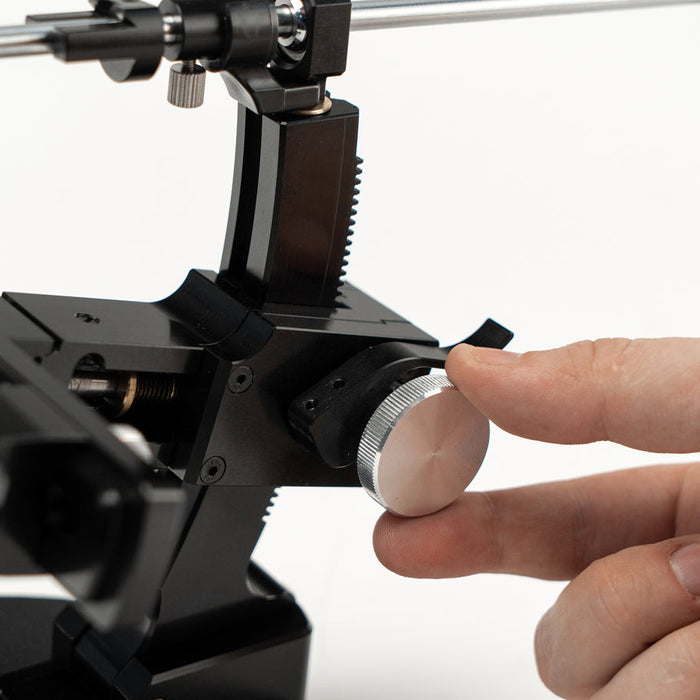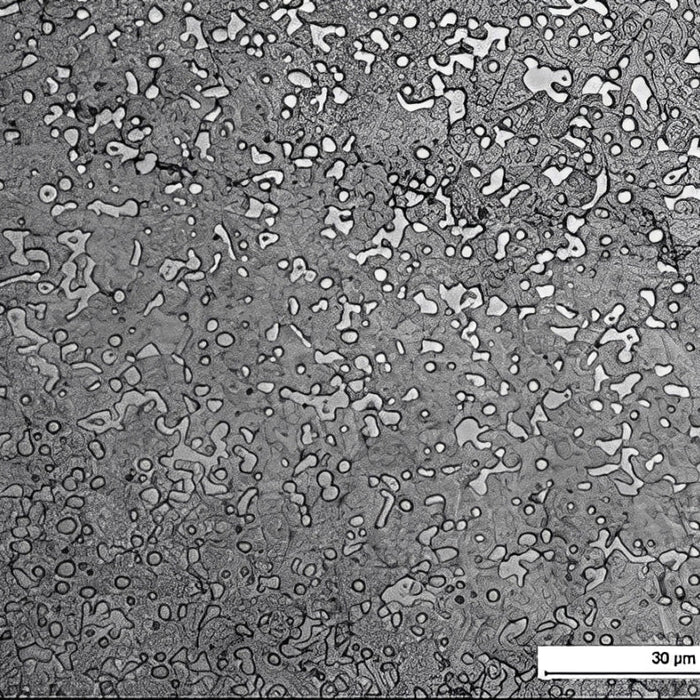Briefly on abrasive grit
The grit of an abrasive material, in our case a sharpening stone or whetstone, should be understood as the average size of grinding particles within a fraction, measured in specific units.
If we speak about choosing the grit for sharpening a knife, rather than defining it, we need to understand the primary rule. Sharpening a knife edge usually starts with the coarsest abrasives available. The coarser the grit of the sharpening stone, the more metal removal occurs from the knife bevel. Coarse grit sharpening stones also leave significantly deeper scratches on the bevel surfaces and can damage or destabilize the knife's edge.
Initially, coarse abrasive stones are used during sharpening, gradually transitioning to finer grit stones. Subsequently, medium and fine abrasives are used to increase the uniformity and improve the bevel surface cleanliness, as these two planes are meant to form a stable and uniform cutting edge.
Abrasive groups
The grit levels of sharpening stones are commonly associated with their intended purpose. The fundamental division of abrasives into groups according to European (FEPA-F) and Japanese (JIS) classifications aims to express sharpening abrasive properties in specific numbers to clearly illustrate the possible outcomes.
Most existing abrasives typically fall into the following groups:
|
#
|
Description
|
Particle, µ
|
FEPA-F
|
JIS, grit
|
|
1
|
Extremely Coarse
Fastest metal removal,
leaves significantly
visible scratches
on the blade bevel.
The coarsest available.
|
100+
|
F150
|
<150
|
|
2
|
Coarse
Very fast metal removal,
leaves significantly
visible scratches
on the blade bevel.
Considered quite
coarse.
|
60-100
|
F180
-220
|
150-220
|
|
3
|
Medium Coarse
Fast metal removal,
leaves no significant
or clearly visible
scratches on the
blade bevel.
Recommended for
sharpening dull
tools and knives.
|
45-60
|
F230
-240
|
220-300
|
|
4
|
Medium
Good metal removal,
leaves slight
scratches on the
blade bevel.
Corresponds to the
stage before fine
sharpening.
|
35-45
|
F240
-280
|
300-400
|
|
5
|
Medium Fine
Significantly lower
metal removal speed
than the previous
stage. Minimal
recommended grit for
the pre-finish stage
for most knives. The
edge appears matte,
not scratched.
|
25-35
|
F280
-320
|
400-600
|
|
6
|
Fine
Moderate sharpening
speed, leaves the
cutting edge matte.
Edge sharpness
equivalent to most
factory edges on
knives and tools.
|
15-25
|
F360
-400
|
600-1000
|
|
7
|
Extra Fine
Low metal removal.
The edge acquires a
polished appearance
with greater
sharpness than any
factory sharpening
on good knives.
|
8-15
|
F500
-600
|
1000-2000
|
|
8
|
Extremely/Ultra Fine
Very slow and minor
metal removal.
Cutting edge with
very high sharpness.
|
4-8
|
F800
-1200
|
2000-6000
|
|
9
|
Near Mirror Polish
Slight increase in
sharpness and polish
of the cutting edge
surface. The edge
is very close to ideal.
|
2-4
|
F1000
-1500
|
6000-10000
|
|
10
|
Mirror Polish
Maximum achievable
sharpness and
mirror-surface edge
without visible defects.
|
0-2
|
F2000
-7500
|
10000+
|
These ten groups of abrasives can also be practically condensed into five main groups:
-
Ultra-coarse abrasives from 100 microns and above
-
Coarse abrasives 45 – 100 microns
-
Medium abrasives 25 – 45 microns
-
Fine abrasives 8 – 25 microns
-
Ultra-fine abrasives 0.5 – 8 microns
These five groups of abrasives, in practice, will be clearer for beginners when choosing necessary abrasives. It should also be understood that the first and last groups are rarely used in practice, often doing more harm than good.
All abrasives from the first group are not particularly effective despite their significant grit. Such abrasives can often cause significant damage to the knife blade. Subsequently, eliminating defects will require either too much time or a significant series and sequence of abrasives. Additionally, genuinely good and effective coarse abrasives are relatively scarce.
Ultra-fine abrasives of less than 1-2 microns can create a very clean surface but may significantly reduce the blade's cutting aggressiveness. They are suitable only in rare cases and intended for professional use. At the initial training stage, it's better not to use them.
Number of sharpening abrasives
The number of abrasive stones with unique properties and grit becomes one of the most significant questions. It's easier to consider several examples for understanding.
Example of grit combination #1. Although the sharpening process itself is divided into three main stages, it does not necessarily mean there must be exactly the same number of stones. Three is simply the essential minimum, and their number can vary.
Example of grit combination #2. Depending on the knife blade parameters, you might require a different number at each stage. If the steel is hard, you might need one coarse and two medium abrasives to smoothly transition to the finish. Thus, you will have: 1 coarse, 2 medium, and 1 fine.
Example of grit combination #3. If, in this situation, you want a cleaner finish, you might expand the set with an additional fine stone, totaling six sharpening stones.
Example of grit combination #4. In another situation, with simpler steel, you might need only two abrasives: one coarse and one fine. A single combined stone is often sufficient.
Example of grit combination #5. If your blade's steel is expensive and complex, you might use 6–8 different abrasives, though this is more an exception than the norm.
It becomes clear at this stage that much depends on the knife's parameters, blade steel, intended use, and its current condition. You might only need minor edge adjustments, requiring just one abrasive in certain situations.
Summary tables of abrasives
To compare various abrasives' grit, summary tables are commonly used. However, these tables don't display the entire picture, and much must be verified through personal experience.
Initially, understanding summary abrasive tables may seem complicated for beginners but will be informative. The tables clarify existing abrasives and their grit ranges. One of the most informative tables is the Grand Logarithmic Grit Chart available at www.gritomatic.com.
Over time, users can compile their own summary tables and effectively use them based on their knowledge.
Conclusion or principle of available abrasives
This principle can be explained based on what is commercially available or commonly offered by manufacturers. It partially stems from various factors and long-term expert sharpening practices.
If readers observe what the Boride company offers, they immediately notice abrasives in coarse, medium, and fine groups. This matches the three sharpening stages: blade repair or re-sharpening, sharpening, and finishing (honing or polishing).
All these concepts mentioned in the article are closely interconnected, and all these principles are simultaneously considered when selecting abrasive stones.
Beginners at the very start of their sharpening journey should avoid purchasing complete abrasive lineups and instead use versatile small sets, practicing on relatively simple steels. A good object for sharpening practice can be kitchen knives, as they typically use simple steels of medium or good mid-level quality. Such steel can be effectively sharpened with various water abrasives to gain practical experience.
Example. If a reader wants one of the most versatile abrasive stone sets capable of handling almost any steel, attention should be paid to the Boride CS-HD 220 stone, supplemented by two diamond stones on an organic bond with two grit sizes in the range of 20-14 microns and 7-5 microns from any manufacturer.










